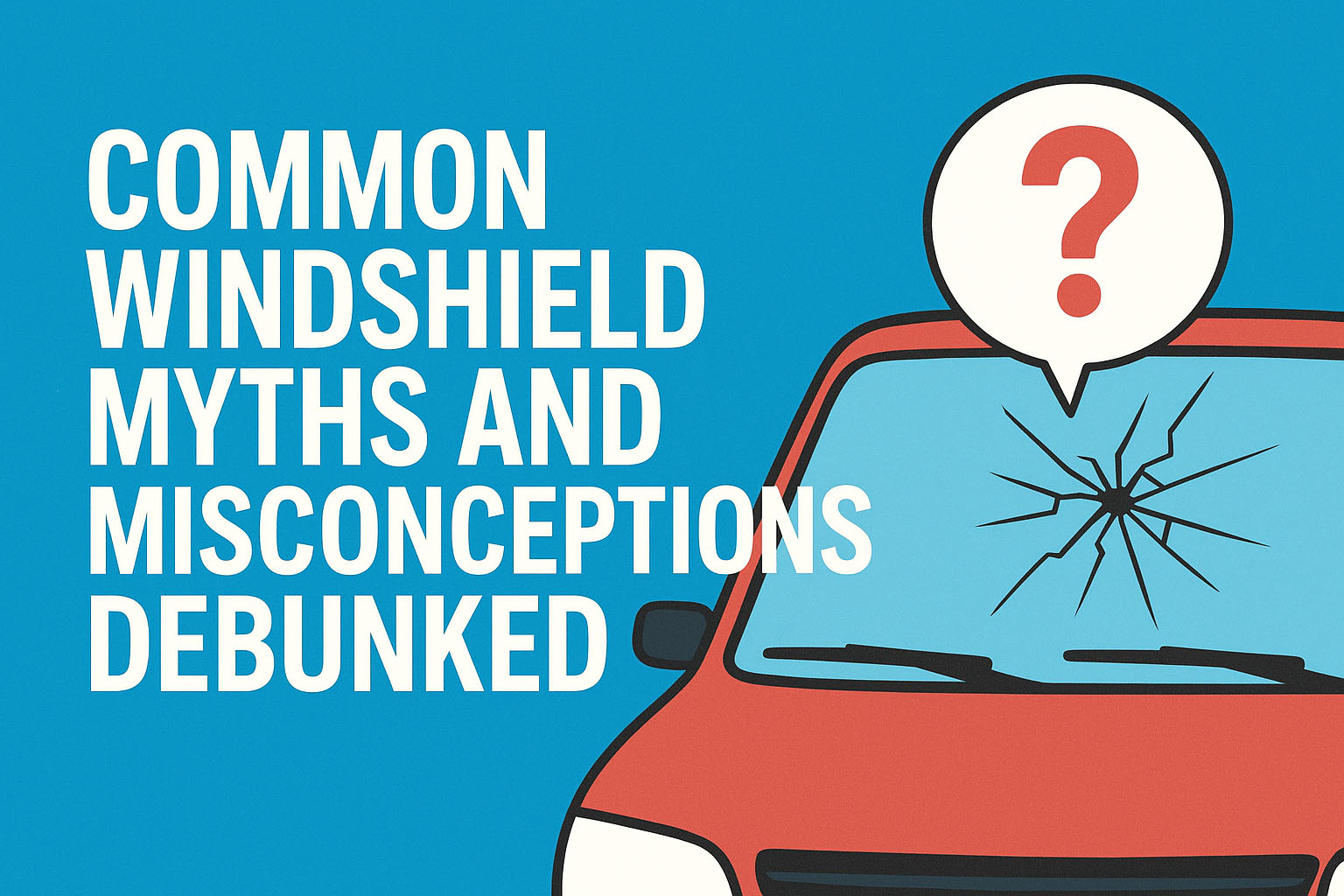Your car’s windshield does far more than block bugs and wind, it’s a critical safety component that supports your vehicle’s structure, protects passengers in an accident, and ensures clear visibility on the road. Despite its importance, many drivers still fall for common myths about windshield repair and replacement. Believing these misconceptions can lead to unsafe driving conditions, unnecessary expenses, or even voided insurance coverage.
In this article, we’ll break down the most widespread windshield myths, explain the real facts behind them, and help you make more informed decisions when it comes to protecting your vehicle’s glass.
Myth #1: “A Small Chip Isn’t a Big Deal”
The truth: Even a small chip can quickly spread into a large crack—especially with temperature changes, road vibrations, or moisture. What starts as a tiny blemish can compromise the windshield’s integrity within days or weeks.
Windshields are designed to handle high pressure and impact, but once the glass is chipped, its strength is reduced. In some cases, a repair may be possible, but ignoring the damage can turn a minor issue into a full replacement.
Pro tip: Always address chips early. Repairs are faster, cheaper, and safer than waiting for the damage to spread.
Myth #2: “Windshield Replacement Is Too Expensive”
The truth: The cost of windshield replacement depends on the vehicle type, technology features, and location—but it’s often more affordable than people think. Many insurance policies cover windshield repairs or replacements (sometimes with zero deductible), especially in states like Arizona or Florida.
Replacing your windshield promptly prevents future issues such as water leaks, poor visibility, or failed ADAS recalibration—all of which can become far more costly in the long run.
Remember: Delaying replacement can endanger your safety and cost more down the road.
Myth #3: “Aftermarket Glass Is Always Inferior”
The truth: Not necessarily. High-quality aftermarket windshields can meet or even exceed OEM (Original Equipment Manufacturer) standards. The key factor is using a reputable shop that installs certified glass and follows proper safety procedures.
While OEM glass is made by or for the vehicle manufacturer, aftermarket glass is produced by third-party companies that adhere to the same safety standards. What really matters is the quality of materials and accuracy of installation, not just the brand name.
Myth #4: “Windshield Replacement Is Only About the Glass”
The truth: Modern windshields are packed with technology—especially in vehicles equipped with ADAS (Advanced Driver Assistance Systems). Features like lane departure warning, adaptive cruise control, and automatic emergency braking rely on sensors and cameras mounted to or behind the glass.
That means replacing a windshield isn’t just swapping out a pane—it often requires professional calibration to ensure these safety systems work properly. Skipping this step can make your ADAS inaccurate or even disable it completely.
Myth #5: “It’s Safe to Drive Right After a Windshield Replacement”
The truth: Not always. After installation, the adhesive used to secure the windshield needs proper curing time—usually one hour or more, depending on the product and environmental conditions.
Driving too soon can compromise the bond between the glass and your car frame, increasing the risk of leaks, wind noise, or the windshield detaching during an accident. A reliable auto glass technician will always inform you of the safe drive-away time.
Myth #6: “All Auto Glass Shops Offer the Same Quality”
The truth: The quality of service can vary dramatically between shops. Some may use low-grade glass, skip calibration, or fail to follow safety standards for adhesives and installation.
Choosing a trusted, certified shop ensures that your windshield replacement meets federal safety standards, maintains your vehicle’s structural integrity, and keeps your ADAS functioning correctly.
The Importance of Your Windshield
Your windshield is more than a window—it’s a vital part of your vehicle’s safety system. It provides up to 45% of the vehicle’s structural strength in a front-end collision and up to 60% in a rollover accident. A properly installed, undamaged windshield keeps airbags deploying in the right direction, prevents passengers from being ejected, and supports the roof from collapsing.
That’s why even small damage or improper installation can have serious safety implications. Regular inspection, prompt repairs, and choosing qualified technicians aren’t just about aesthetics—they’re about protecting lives.
Conclusion
Don’t let misinformation put your safety or wallet at risk. Understanding the facts about windshield care helps you make smarter, safer decisions for your vehicle.
If you suspect damage or need a replacement, use AutoGlassEstimator.com’s free quote tool to compare prices and reviews from up to three trusted shops near you. Whether it’s a simple chip repair or a full ADAS-equipped windshield replacement, finding a reputable provider ensures you get quality service at a fair price.

